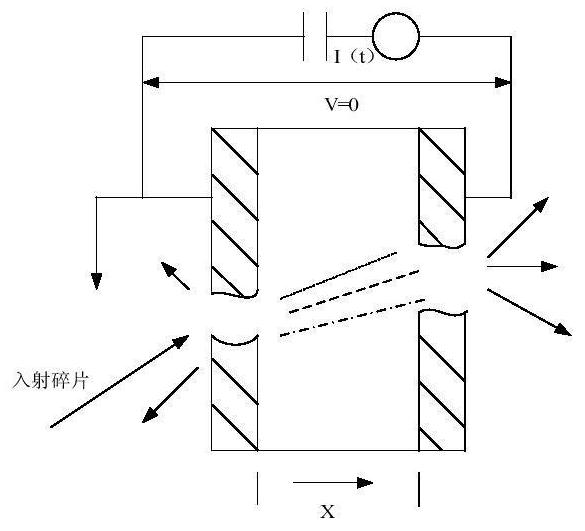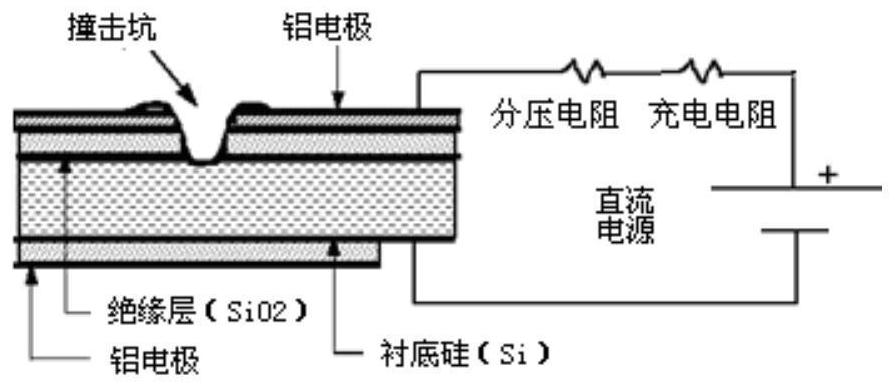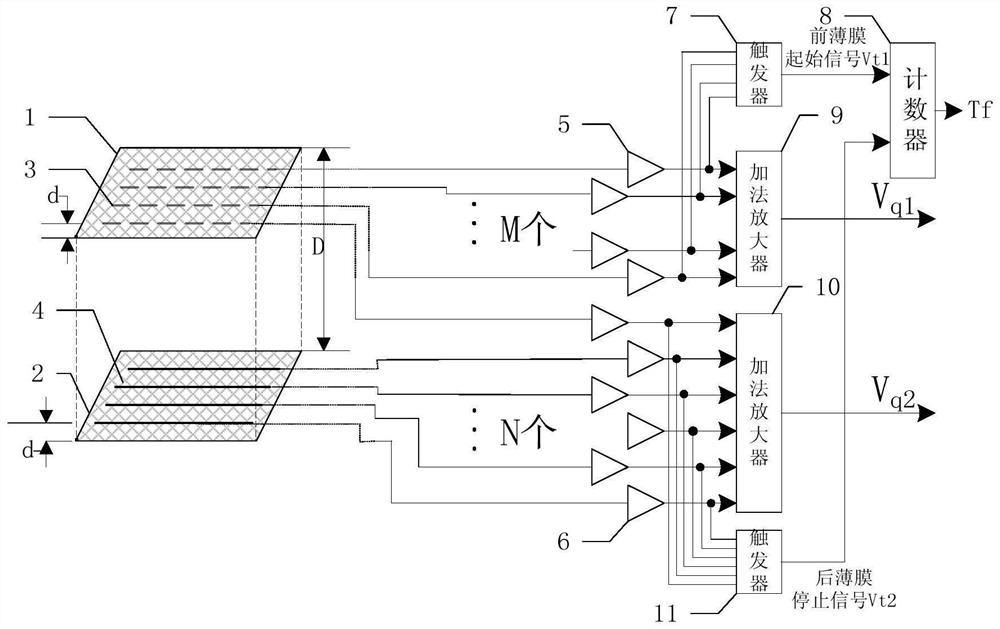A multi-parameter measurement probe and measurement method for in-orbit tiny space debris
A technology of tiny space and measuring probe, applied in measuring devices, instruments, etc., can solve the problems of complex design, inability to measure speed, large volume power consumption, etc., and achieve the effect of easy integrated installation, simple structure and light weight
- Summary
- Abstract
- Description
- Claims
- Application Information
AI Technical Summary
Problems solved by technology
Method used
Image
Examples
Embodiment 1
[0067] The invention proposes a multi-parameter tiny space debris measurement probe. The probe structure is shown in figure 2 As shown, including front film 1, rear film 2 placed in parallel, 20 front collector electrodes 3, 20 rear collector electrodes 4, 20 front collector electrode charge amplifiers 5, 20 rear collector electrode charge amplifiers 6, front film impact Trigger 7 , high frequency pulse counter 8 , front collecting electrode charge signal summing amplifier 9 , rear collecting electrode charge signal summing amplifier 10 , rear film impact trigger 11 .
[0068] In this embodiment, the front film 1 and the rear film 2 of the probe are made of aluminized polyimide film as the impact carrier, and the high-speed space microscopic debris hits the front film 1 and the rear film 2 to generate plasma, and the ions in the plasma are in the collecting electrode and the collector electrode. Under the action of the electric field between the films, ions are collected and a...
Embodiment 2
[0127] The front film 1 and the back film 2 are aluminized polyimide films. The thickness refers to the data in Table 1, and the film thickness is 10 μm; p is the depth of the impact crater on the target (cm), d p is the diameter of incident tiny space debris (cm), B H is the Brinell hardness of the film material; ρ p is the density of the film material (g / cm 3 ); ρ t is the density of tiny space debris (g / cm 3 ); V n is the incident velocity relative to the film (km / s); C is the sound velocity of the material taking 5.1km / s, and the incident direction θ is 0. The thickness of the film is 20 μm, and the impact crater depth of the tiny debris should be greater than 2 times the thickness of the film (40 μm). The corresponding minimum measurable space debris range is shown in Table 1 below.
[0128] Table 1 The impact crater depth of tiny space debris in polyimide (space debris of aluminum and iron materials, θ is 0)
[0129]
[0130] Iron tiny space debris with a diamet...
PUM
 Login to View More
Login to View More Abstract
Description
Claims
Application Information
 Login to View More
Login to View More - R&D
- Intellectual Property
- Life Sciences
- Materials
- Tech Scout
- Unparalleled Data Quality
- Higher Quality Content
- 60% Fewer Hallucinations
Browse by: Latest US Patents, China's latest patents, Technical Efficacy Thesaurus, Application Domain, Technology Topic, Popular Technical Reports.
© 2025 PatSnap. All rights reserved.Legal|Privacy policy|Modern Slavery Act Transparency Statement|Sitemap|About US| Contact US: help@patsnap.com



